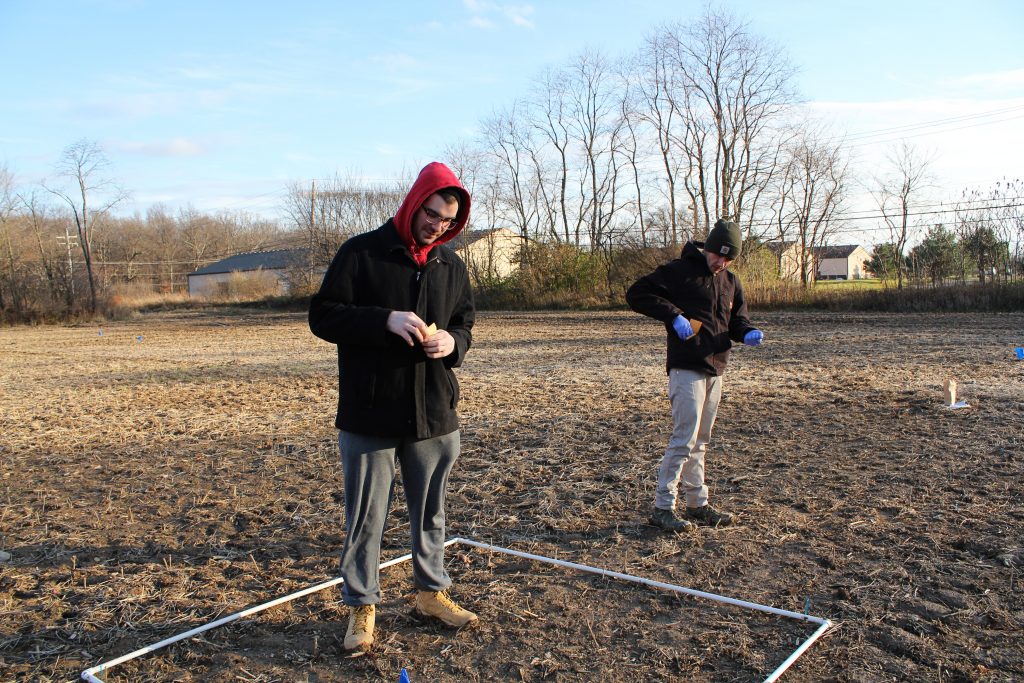This story first appeared in the Spring 2017 issue of The Understory, Legacy’s newsletter, which you can download as a PDF.
By Sarah Turner, Legacy Volunteer and School of Natural Resources and Environment master’s candidate

A chart of test plots containing 768 different treatment areas to find the best seed mixture for restoring prairie ecosystems in southern Michigan.
Of Legacy’s six public preserves, Lloyd and Mabel Johnson Preserve is the only one with both natural and agricultural lands. It is home to regionally important natural communities including mesic (moderately wet) forest, buttonbush swamp, and a shallow-water wetland. The preserve also contains 18 acres of farmland that have been under cultivation since the nineteenth century.
Since acquiring the property in 2007, Legacy has hoped to restore the farm fields to a more natural and sustainable land cover. During the summer of 2016, I worked with Legacy staff to develop a comprehensive restoration plan. With financial support from the Natural Resource Conservation Service’s (NRCS) Conservation Reserve Program (CRP), Legacy is turning fifteen acres of agricultural land into a native prairie. The CRP is designed to help landowners remove sensitive land from agricultural production by planting long-lived native grass and wildflowers to reduce soil erosion, improve water quality, and provide wildlife habitat.

EMU students seeding plots for the study of prairie restoration techniques.
Beginning this spring, a rich diversity of native grasses and wildflowers will take the place of soybeans and corn. We selected a combination of native plant species that suit the current soil and water conditions. The deep roots typical of native grasses will reduce soil erosion and improve the quality of water entering the nearby marsh and buttonbush swamp. The plantings will also provide abundant habitat for native pollinators, insects, mammals, and birds. The trail system on the preserve will remain the same, so preserve visitors can view all stages of the restoration effort.
This is Legacy’s first large-scale ecological restoration project. It will serve as a demonstration for farmers or other landowners who may be interested in returning parts of their land to a more natural state.

Professor Emily Grman (second from right) and her students have enthusiastically helped clear invasive plants at the preserve to help prevent contamination of their seed plots. Photo by Allene Smith.
The remaining three acres of agricultural land at Johnson Preserve are devoted to two partnerships:
- Emily Grman of Eastern Michigan University is conducting a long-term prairie restoration experiment to examine weed suppression, native biodiversity, and performance of various seed mixes. These experiments provide hands-on learning for EMU students and will contribute to the science of grassland restoration in southern Michigan.
- Project Grow, a nonprofit that provides community garden space, will create at least ten new garden plots and educational space to increase community members’ ability to grow fresh food.
On a more personal note, I’m excited to watch all the positive results from returning an ecologically important ecosystem to this site. Developing the plans for this site has given me the opportunity to dig into the field of farmland restoration. We hope you’ll stop by Johnson Preserve to see our progress over the coming months and years!

 RSS Feed
RSS Feed